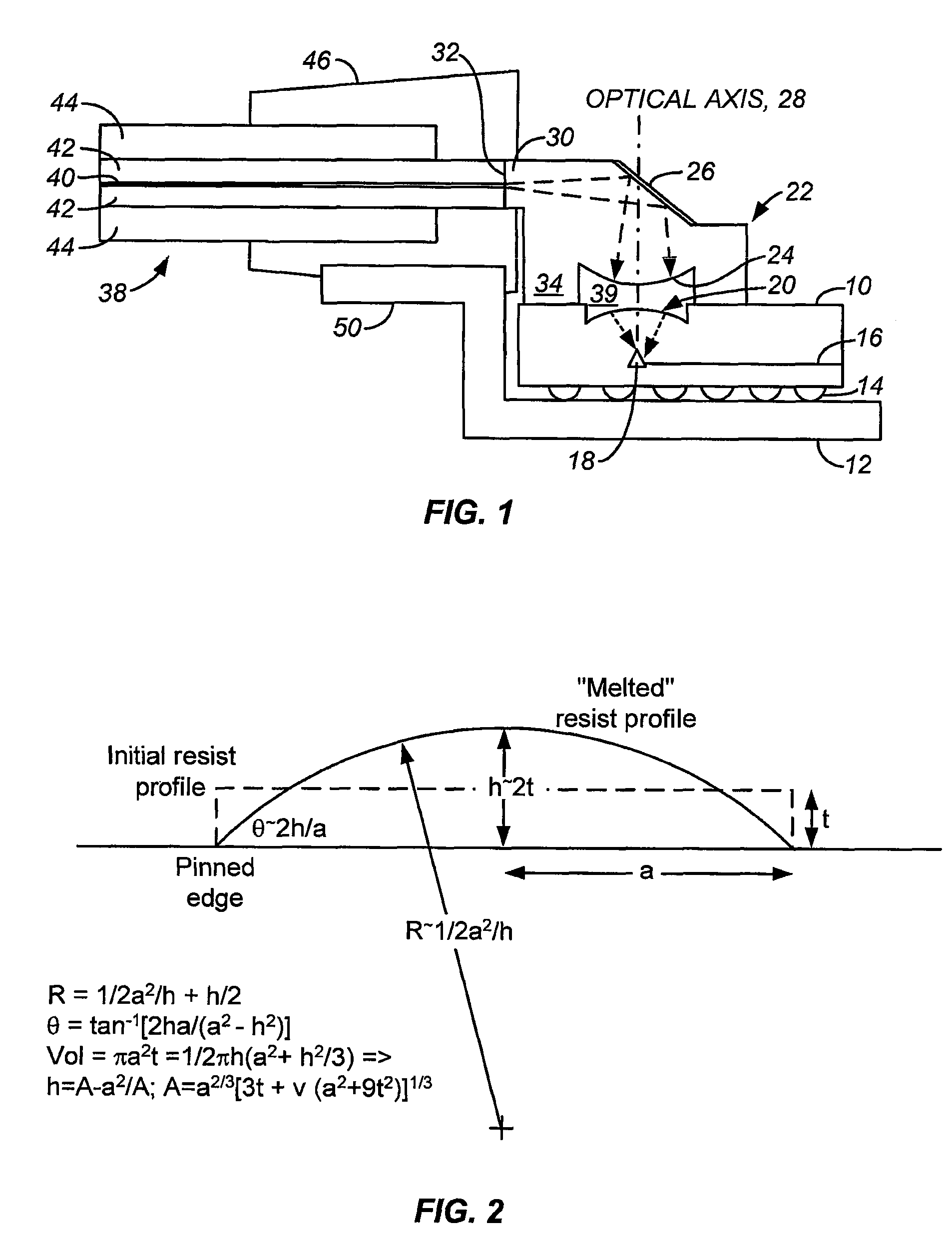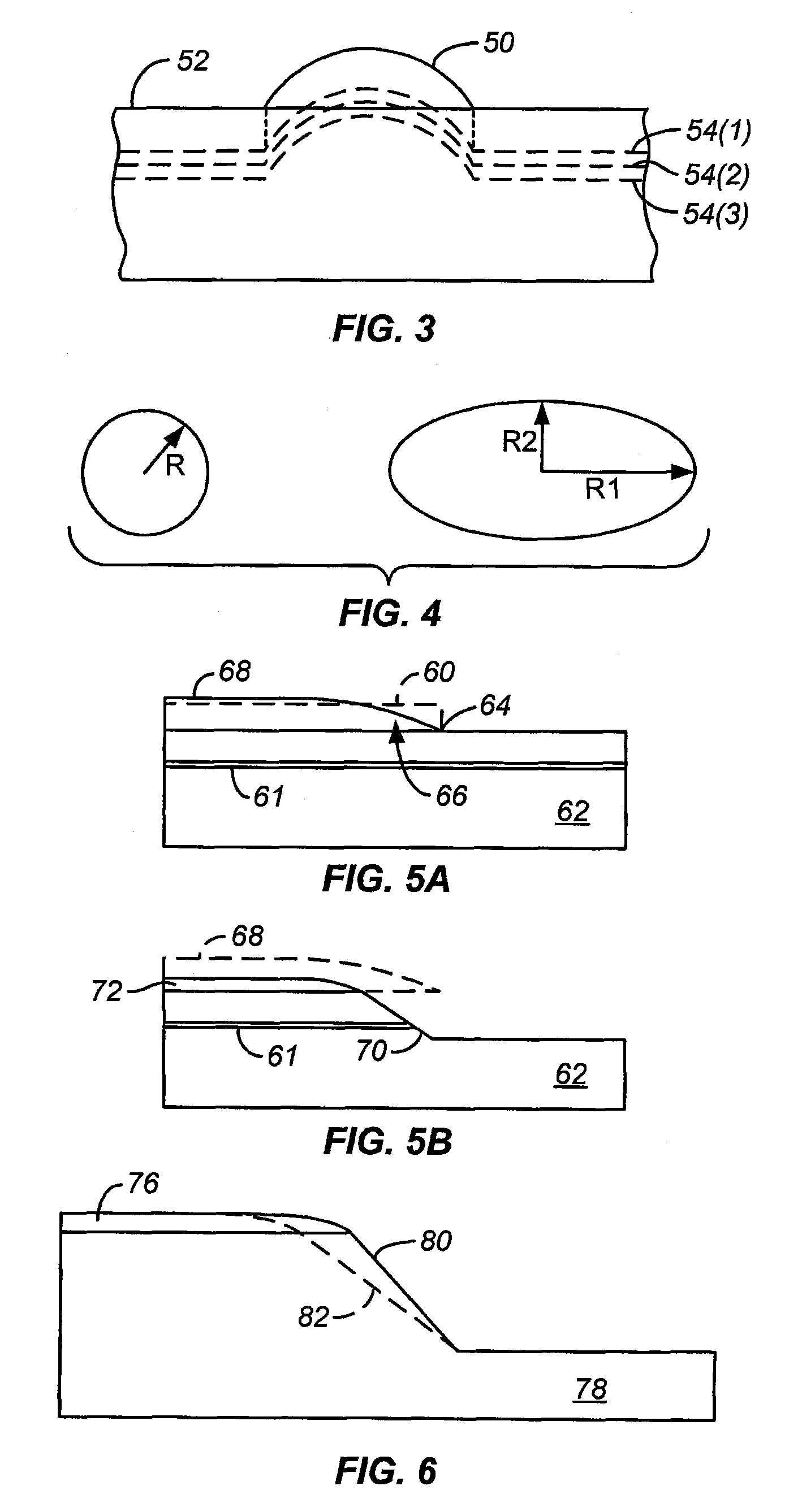Patterning 3D features in a substrate
a technology of 3d features and substrates, applied in the field of patterning 3d features in substrates, can solve the problem of non-conventional thin-film techniques, and achieve the effect of reducing the amount of chang
- Summary
- Abstract
- Description
- Claims
- Application Information
AI Technical Summary
Benefits of technology
Problems solved by technology
Method used
Image
Examples
Embodiment Construction
Fabricating a Lens
[0033]FIG. 1 shows a circuit assembly which includes a silicon IC chip 10 with a lens 20 formed on its back surface in order to provide a way to couple optical signals into and out of the optical circuitry that is fabricated on the chip. IC chip 10 is flip-chip mounted onto a chip carrier 12 by means of a ball grid array (BGA) 14. Using known techniques, such as those described in U.S. Ser. No. 10 / 280,492 entitled “Optical Ready Wafers,” an optical waveguide 16 has been fabricated on the front side of the chip. Waveguide 16 is either fabricated in a layer within the chip that is at the same level as other microelectronic (e.g. CMOS) circuitry (not shown) that is also fabricated on the front side of the chip or it is in a layer that is buried beneath the level in which the microelectronic circuitry resides. Optical waveguide 16 represents an optical signal distribution network that serves to distribute optical clock signals or other optical signals to and / or from th...
PUM
| Property | Measurement | Unit |
|---|---|---|
| angle | aaaaa | aaaaa |
| width | aaaaa | aaaaa |
| width | aaaaa | aaaaa |
Abstract
Description
Claims
Application Information
 Login to View More
Login to View More - R&D
- Intellectual Property
- Life Sciences
- Materials
- Tech Scout
- Unparalleled Data Quality
- Higher Quality Content
- 60% Fewer Hallucinations
Browse by: Latest US Patents, China's latest patents, Technical Efficacy Thesaurus, Application Domain, Technology Topic, Popular Technical Reports.
© 2025 PatSnap. All rights reserved.Legal|Privacy policy|Modern Slavery Act Transparency Statement|Sitemap|About US| Contact US: help@patsnap.com



